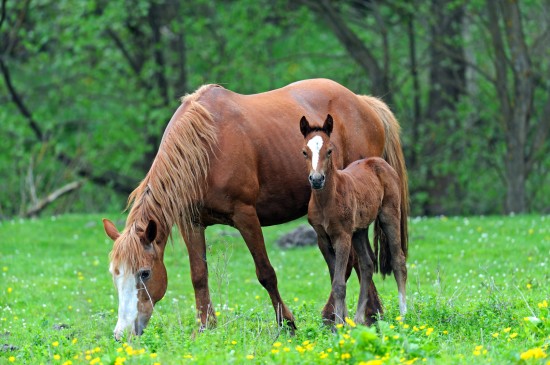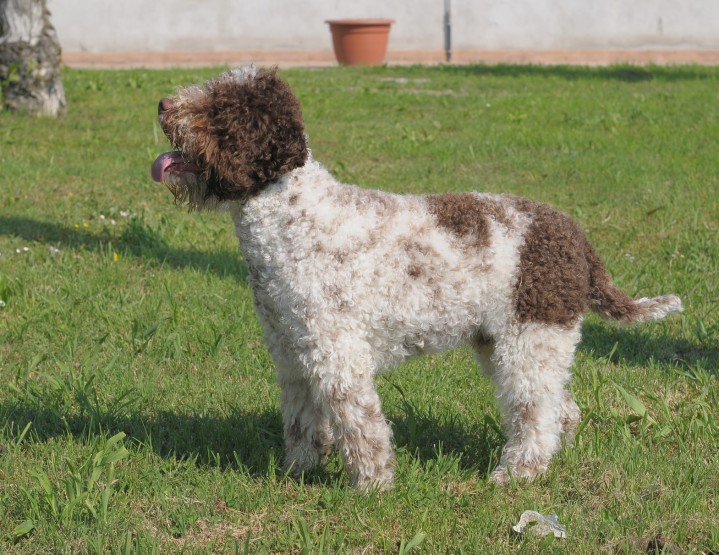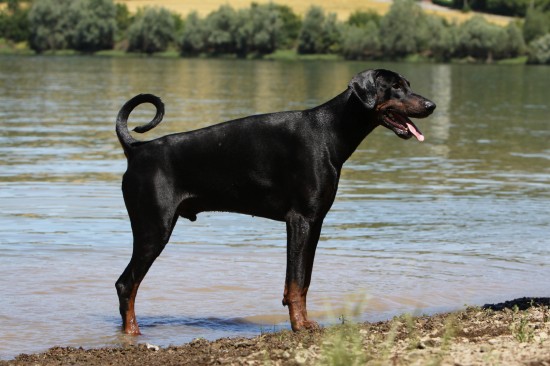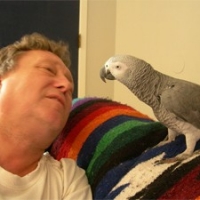
Chewing is as normal for dogs as tail-wagging. If you have a
dog, expect him to chew. Provide him with his own toys and teach
him to use them or he will chew anything available, such as your
furniture and clothing.
Dogs do not chew and destroy your house and belongings because
they are angry, jealous or spiteful. They do it because they are
dogs. They may be lonely, bored, frustrated or anxious, but they
are not malicious, vindictive or petty. Active dogs can become
restless when left alone for long periods.
If you always come home at a certain time and you are late, your
dog may become anxious. Your dog does not punish you for being
late by destructive chewing. The dogs’ chewing is a form of
occupational therapy to relieve stress and release energy. If
you come home and find that your dog has destroyed something, do
not punish the dog. Passive Training to Prevent Destructive
Chewing
Until your dog can be trusted not to destroy your home and yard,
do not give him free, unsupervised run of your house. Give him a
pleasant area or room of his own where he can enjoy himself and
relax when you are not home or are unable to supervise him.
Literally litter his room with a wide variety of toys. Since he
will have no other choice of things to chew, he will learn to
chew and play with his own toys.
Make the toys enticing. Soak rawhide and long marrow bones in
different flavored soups. Let them dry and give a different
flavor to the dog each time you leave him alone. Sterilized
marrow bones and Kong toys can be stuffed with liver treats or
cheese. The dog will be entertained for hours trying to
extricate the treats from the toy.
Active Training to Prevent Destructive Chewing
When you are home, take time to teach your dog to play with her
toys and to seek them out whenever she feels like chewing.
Always lavish your dog with praise every time you see her
playing with or chewing on one of her toys.
Teach your dog to “find” her toys. Scatter several toys in
different rooms throughout the house. Tell her to “find it,”
then immediately lead her from room to room encouraging her to
pick up a toy when she sees one. When she does so, reward with
praise, affection, play and even a food treat, and then continue
the game. Anticipation Chewing
Most destructive chewing occurs just before the owner returns
home. The dog is anxiously anticipating the owner’s return and
this energy is released by chewing. You can prevent your dog
from indiscriminately chewing whatever is handy and instead chew
her own toys.
Whenever you return home, insist that your dog greet you with a
toy in her mouth. At first you will have to help her by telling
her to “find” her toy. Do not give your usual home coming
greeting until she has a toy firmly in her mouth.
Within a few days, your dog will realize that you never say
hello unless she has a toy in her mouth. Now when your dog
starts anticipating your return, she will automatically begin
looking for a toy with which to gain your greeting and approval
when you do return. If a toy is already in her mouth, she will
be likely to chew on it, rather than on the furniture, to
release tension.
Chewing Deterrents
If you catch your dog in the act of chewing a forbidden item,
you can sternly scold her with a verbal warning. Immediately
direct your dog to one of her own toys and praise her for
chewing it. This will teach your dog not to chew forbidden items
when you are present, but it probably will not discourage the
dog from investigating these items when you are not there.
The only way to prevent your dog from chewing these things is to
make them inherently unattractive. There are many products in
pet stores that are designed to apply to furniture, etc that are
safe but repulsive to dogs. Why chew on something that is
boring, distasteful or unpleasant when there are plenty of fun,
exciting and tasty things to chew on?
Common Sense and Chewing
By far the simplest way to keep your dog from chewing on
forbidden items is to prevent access to them. Put your shoes in
the closet and shut the door. Place the trash outside. Keep
doors closed; keep valuables out of reach. Praise and reward
your dog profusely for chewing her own toys.
The above is general veterinary information. Do not begin
any course of treatment without consulting your regular
veterinarian. All animals should be examined at least once every
12 months.
 Do Horses Inherit Character Traits?
Do Horses Inherit
Do Horses Inherit Character Traits?
Do Horses Inherit
 Peta Kills Animals Yet Pretends To Protect Them
PETA (People for Ethical Treatment of Animals) is an int
Peta Kills Animals Yet Pretends To Protect Them
PETA (People for Ethical Treatment of Animals) is an int
 More Information On The Lagotto Romagnolo Dog Breed
More Information
More Information On The Lagotto Romagnolo Dog Breed
More Information
 Wobbler Syndrome In Dobermans
Wobbler Syndrome
Wobbler Syndrome In Dobermans
Wobbler Syndrome
 Companion Parrots - Gratification Of Living Together
You’re Companion Parrot
Having a companion parrot is
Companion Parrots - Gratification Of Living Together
You’re Companion Parrot
Having a companion parrot is
Copyright © 2005-2016 Pet Information All Rights Reserved
Contact us: www162date@outlook.com